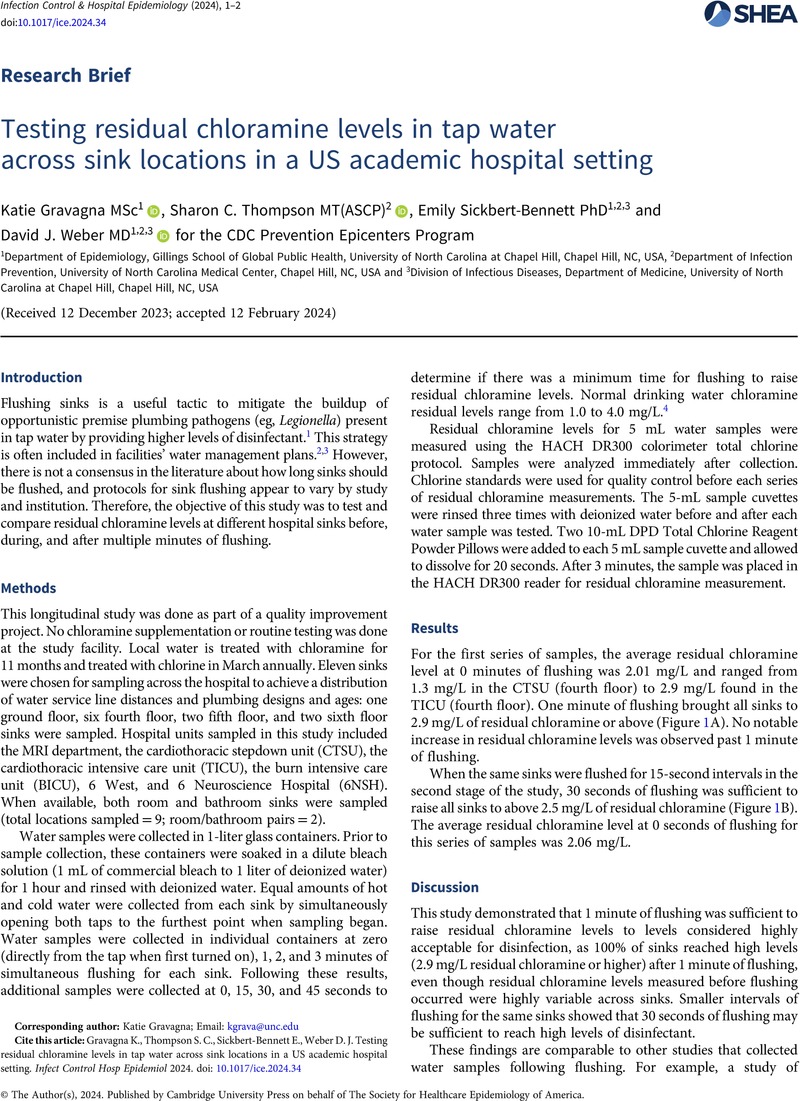No CrossRef data available.
Article contents
Testing residual chloramine levels in tap water across sink locations in a US academic hospital setting
Published online by Cambridge University Press: 20 March 2024
Abstract
An abstract is not available for this content so a preview has been provided. Please use the Get access link above for information on how to access this content.

- Type
- Research Brief
- Information
- Copyright
- © The Author(s), 2024. Published by Cambridge University Press on behalf of The Society for Healthcare Epidemiology of America
References
Franco, LC, Tanner, W, Ganim, C, Davy, T, Edwards, J, Donlan, R. A microbiological survey of handwashing sinks in the hospital built environment reveals differences in patient room and healthcare personnel sinks. Sci Rep 2020;10:8234.CrossRefGoogle ScholarPubMed
ANSI/ASHRAE. Standard 188-2018, Legionellosis: Risk management for building water systems, 2018. https://www.ashrae.org/technical-resources/bookstore/ansi-ashrae-standard-188-2018-legionellosis-risk-management-for-building-water-systems. Published 2018. Accessed May 10, 2023.Google Scholar
Centers for Disease Control and Prevention. Water management in healthcare facilities, 2021. https://www.cdc.gov/legionella/wmp/healthcare-facilities/water-mgmt-facilities.html. Published 2021. Accessed May 10, 2023.Google Scholar
Centers for Disease Control and Prevention. Disinfection with chloramine and chloramine, 2020. https://www.cdc.gov/healthywater/drinking/public/water_disinfection.html. Published 2020. Accessed May 10, 2023.Google Scholar
Lu, J, Buse, H, Struewing, I, Zhao, A, Lytle, D, Ashbolt, N. Annual variations and effects of temperature on Legionella spp. and other potential opportunistic pathogens in a bathroom. Environ Sci Pollut Res 2017;24:2326–36.CrossRefGoogle Scholar
Sathasivan, A, Chiang, J, Nolan, P. Temperature dependence of chemical and microbiological chloramine decay in bulk waters of distribution system. Water Sci Technol Water Supply 2009;9:493–9.CrossRefGoogle Scholar





